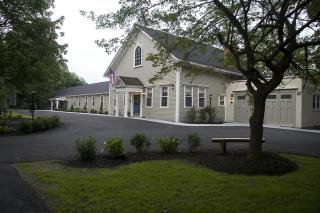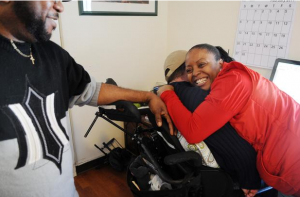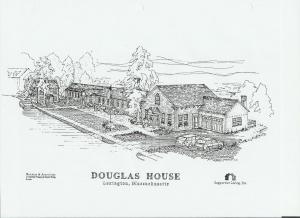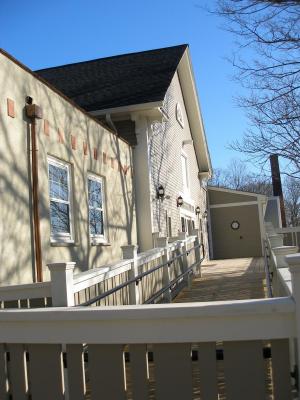Lexington’s Douglas House for Brain-Injured Adults Exemplifies CPA Adaptive Reuse

The town of Lexington launched an award-winning community preservation project that encapsulates three CPA pillars and continues to enhance the lives of individuals and the local community.
The Douglas House meets CPA affordable housing, historic preservation and outdoor recreation goals through its restoration of one of the town’s last remaining factory buildings into a 15-unit residence for brain-injured adults. The Lexington Community Preservation Committee allotted $300,000 from their Housing reserve toward the project, while the remaining $5.9 million was leveraged from in nine other federal, state and local sources.
 The residence, owned by Supportive Living Inc. (SLI), offers units in compliance with the Americans with Disabilities Act (ADA) standards at low- and moderate-income rates. The project aspires to help residents become more independent and self-sufficient with the support of a seven-day, 24-hour staff of nurses, therapists, and personal care professionals. Completed in 2008, the units feature several common areas including a parlor, dining room, kitchen, TV room, outdoor patio and deck. Each room bares architectural signs of the buildings 1870s origin, when it was first occupied as a mill building.
The residence, owned by Supportive Living Inc. (SLI), offers units in compliance with the Americans with Disabilities Act (ADA) standards at low- and moderate-income rates. The project aspires to help residents become more independent and self-sufficient with the support of a seven-day, 24-hour staff of nurses, therapists, and personal care professionals. Completed in 2008, the units feature several common areas including a parlor, dining room, kitchen, TV room, outdoor patio and deck. Each room bares architectural signs of the buildings 1870s origin, when it was first occupied as a mill building.
Its original tenants, M.H. Merriam & Company, used the space to manufacture shoe and clothing components sold across the country. Most recently, the building housed the Lexington Press. Throughout its current restoration, architects worked in accordance with the Secretary of the Interior’s Standards for historic preservation. To this end, several unique features including the building’s original wood trusses or “ship’s knees” were left exposed.
 To ensure affordability and support Lexington’s overall 11.2% low- and moderate-income housing level, the project offers rental assistance through the U.S. Housing and Urban Development (HUD) department’s Section 811 Project Rental Assistance Contract. Thereby, eligible residents pay 30 percent of their adjusted income toward rent and the HUD subsidizes the remaining balance.
To ensure affordability and support Lexington’s overall 11.2% low- and moderate-income housing level, the project offers rental assistance through the U.S. Housing and Urban Development (HUD) department’s Section 811 Project Rental Assistance Contract. Thereby, eligible residents pay 30 percent of their adjusted income toward rent and the HUD subsidizes the remaining balance.
In addition to representing community preservation through historic restoration and affordable housing, the Douglas House also incorporates another CPA objective – recreation. By maintaining a wheelchair accessible path, residents can conveniently travel between the House and Lexington town center. The path even provides access to the Minuteman rail-trail, an 11-mile route that connects Cambridge, Arlington, Lexington and Bedford.
 In 2008, Paul “Randy” Dippolito became one of the first individuals to benefit from the project. After a 1979 car accident, Paul endured a traumatic brain injury that made independent living an ongoing challenge. “At the Douglas House, he has been given the opportunity to expand his world again, and live the kind of life the rest of us take for granted,” wrote his sister Claudia Brookes in a 2009 email to the Lexington Community Preservation Committee.
In 2008, Paul “Randy” Dippolito became one of the first individuals to benefit from the project. After a 1979 car accident, Paul endured a traumatic brain injury that made independent living an ongoing challenge. “At the Douglas House, he has been given the opportunity to expand his world again, and live the kind of life the rest of us take for granted,” wrote his sister Claudia Brookes in a 2009 email to the Lexington Community Preservation Committee.
For the project’s remarkable design and implementation of CPA adaptive reuse, the Coalition awarded the town of Lexington with a 2009 Robert Kuehn Community Preservation Award.
The Douglas House is SLI’s third property dedicated to providing housing for brain-injured adults and was named for Douglas Stevens, the late husband on SLI co-founder Carol Stevens.

